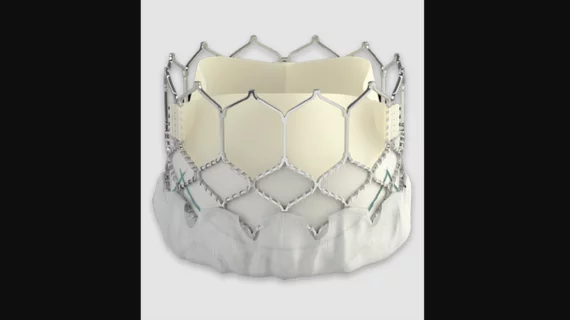Transcatheter mitral valve-in-valve replacement benefits intermediate-risk patients
Transcatheter mitral valve-in-valve replacement (MViV) may be a safe and effective treatment option for intermediate-risk patients who present with a failing mitral bioprosthetic valve, according to new one-year data published in Circulation: Cardiovascular Interventions.[1]
“Patients with bioprosthetic valve failure (BVF) secondary to structural valve deterioration after surgical mitral valve replacement (MVR) face reoperative MVR as their primary therapeutic option,” wrote first author S. Chris Malaisrie, MD, a professor of surgery in the division of cardiac surgery at Northwestern University and attending cardiac surgeon at Northwestern Medicine, and colleagues. “In patients at high risk for reoperative surgery, transcatheter MViV is a reasonable option. Limited experience and no clinical practice guidelines exist for intermediate-risk patients with BVF.”
Malaisrie et al. explored data one-year findings from the Partner 3 MViV study, which included 50 patients who underwent MViV from 2018 to 2021 at one of 12 facilities in the United States, Brazil or Australia. All patients presented with moderate or greater mitral stenosis and mitral regurgitation due to BVF as well as a Society of Thoracic Surgeons (STS) score equal to or greater than 3%, but less than 8%.
The mean patient age was 70.1 years old, mean STS score was 4.1% and mean surgical bioprosthesis age was 11.3 years. Isolated mitral stenosis was the most common reason for valve failure. While 52% of patients also presented with a history of atrial fibrillation, 44% presented with a history of pulmonary hypertension.
All patients underwent transseptal transcatheter MViV with either a 26-mm or 29-mm Sapien 3 transcatheter heart valve manufactured by Edwards Lifesciences. Hospitalizations lasted approximately three days.
The study’s primary endpoint—all-cause mortality or stroke after one year—was not seen in any patients. No patients experienced left-ventricular outflow tract obstruction, endocarditis or myocardial infarction, and no mitral valve reinterventions were required. Six patients did require rehospitalization, two due to heart failure symptoms, two for “minor procedural side effects” and two due to valve thrombosis. The two valve thrombosis patients saw symptoms resolved with anticoagulation therapy.
Both men and women had “significantly lower” mean gradients after both 30 days and one year. All patients had no/trace or mild mitral regurgitation after one year. In addition, the group noted, the New York Heart Association class improved for 87% of patients after one year.
“In appropriately selected patients, transseptal MViV appears to be a favorable and safe procedure,” the authors wrote.
The group also noted that mortality following MViV has historically improved over time, decreasing from 8.2% in previous studies to 6.5% in more recent research. Time and time again, they wrote, transcatheter MViV has been linked to “superior safety” compared to a full surgical procedure.
Malaisrie and colleagues will follow these patients for a total of 10 years. It is still too early to evaluate the long-term valve durability or “implications for lifetime management” associated with this treatment strategy.
Edwards did fund this research, and multiple authors had prior relationships with Edwards.
Read the full study here.

